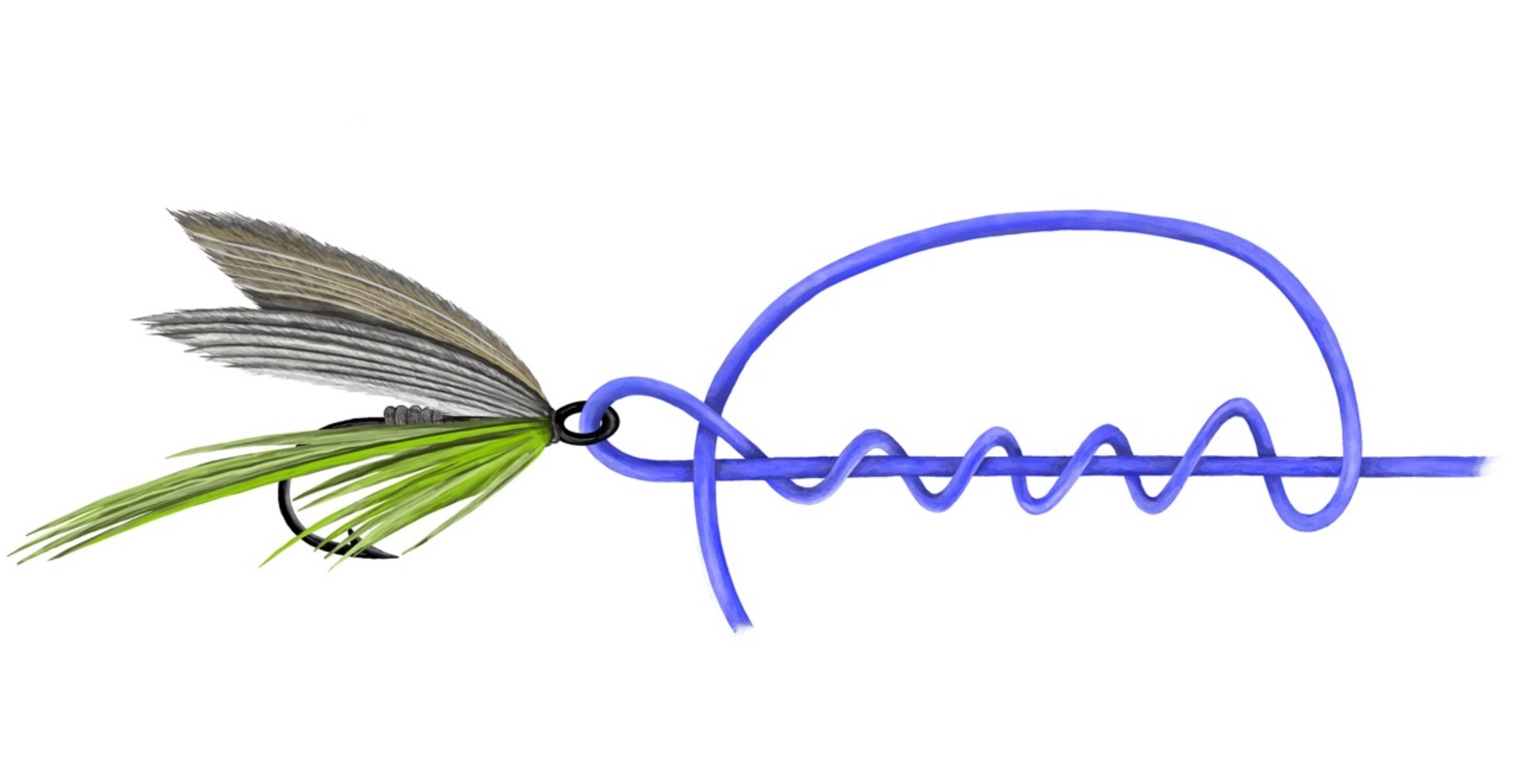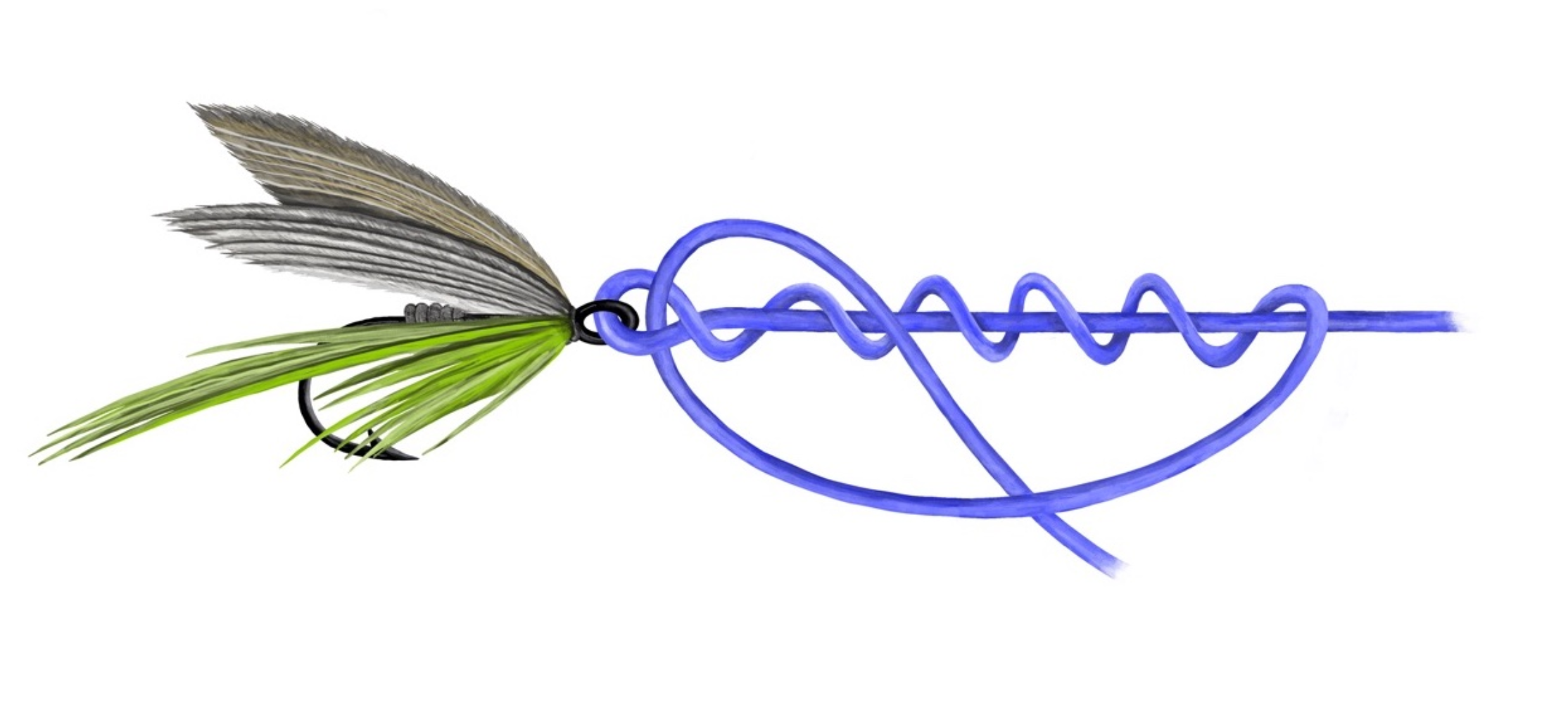The clinch knot and the improved clinch knot are two of the most popular knots for fly fishers. They’re both relatively easy to learn and effective in many situations. Here’s a breakdown to help you decide which one to use:
Clinch Knot: Simple and Fast
-
Strengths:
- Easiest to tie among common fly fishing knots
- Works well with light to medium weight lines
- Quick to re-tie, ideal for situations with frequent fly changes
-
Weaknesses:
- Can slip with wet monofilament or fluorocarbon lines
- Not ideal for heavy lines due to bulkiness

Tying the Clinch Knot:
- Pass the line through the eye of the fly.
- Wrap the line around the standing line 5-7 times.
- Pass the tag end back through the loop closest to the eye.
- Pull the tag end to tighten the knot.
Improved Clinch Knot: Extra Security
-
Strengths:
- More secure than the clinch knot, especially with slippery lines
- Handles heavier lines better due to reduced bulk
-
Weaknesses:
- Slightly more complex to tie than the clinch knot

Tying the Improved Clinch Knot:
- Pass the line through the eye of the fly.
- Wrap the line around the standing line 5-7 times.
- Instead of threading through the closest loop, pass the tag end through the large loop created by the wraps.
- Pass the tag back through the smaller loop closest to the eye.
- Pull the tag end to tighten the knot.
Choosing the Right Knot
- Clinch Knot: Use this for light to medium lines when speed and ease of tying are priorities.
- Improved Clinch Knot: Choose this for slippery lines, heavier lines, or targeting larger fish where extra strength is crucial.
Regardless of the knot, practice tying it properly and always test its strength with a tug before fishing. A well-tied knot, whether clinch or improved clinch, can make the difference between landing a trophy or losing your fly.
Images/Source: FlyFishCircle





